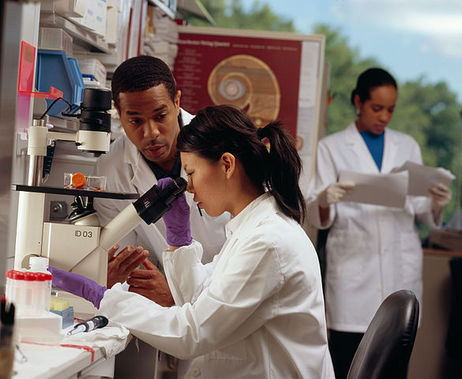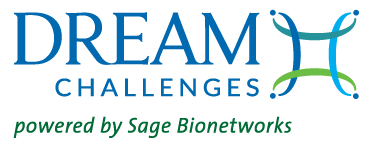Solving Prostate Cancer Challenges with Open Innovation
Published Jun-19-17Breakthrough:
New models to better predict survival for prostate cancer patients.
Company:
DREAM/Sage Bionetworks, United States
The Story:
 The DREAM Challenges are an open innovation project that uses big data to solve very tough challenges in the realms of medicine. Participants come from across the globe and include university researchers, not for profits, technology companies and biotechnology and pharmaceutical companies.
The DREAM Challenges are an open innovation project that uses big data to solve very tough challenges in the realms of medicine. Participants come from across the globe and include university researchers, not for profits, technology companies and biotechnology and pharmaceutical companies. Teams work collaboratively to develop new ways to use data to better understand biological systems and processes and to improve health. Data can be one of the keys to saving lives, and there are reams of it, including research data, pharma data and patients with their generations’ worth of family data.
March 2015 saw the launch of the Prostate Cancer DREAM Challenge, which focused on improving the prediction of survival and toxicity of docetaxel (a chemotherapy medication) in patients with metastatic castration-resistant prostate cancer (mCRPC). Prostate cancer is the most common cancer in men, and this effort lays claim to being the first research challenge in prostate cancer to combine crowdsourcing with data sharing.
Participants used curated data from four phase III trials studying mCRPC and were tasked with finding answers in three areas:
•Predict overall survival for prostate cancer patients using clinical data
•Predict the exact time to event for prostate cancer patients using clinical data
•Predict treatment discontinuation for prostate cancer patients treated with docetaxel
More than 550 people participated, split into more than 50 teams. They produced nearly 1,200 model predictions and nearly 160 final submissions were made.
Improving Cancer Research
The best performers included Team FIMM-UTU from the University of Turku, Finland, and the University of Helsinki, Finland for their work on predicting the overall survival of prostate cancer patients. Also recognized was Yuanfang Guan from the University of Michigan for his work on the prediction of treatment discontinuation.
The winners received a share of an education award and were invited to co-author a paper to be submitted to Nature Biotechnology. Additional benefits for participants which feed back into their careers include the forming of new professional relationships, access to fascinating data and recognition from solving a challenge that could help secure new grants. Above all, their work can help improve clinical trial design and treatment options.
Open Innovation and Cancer Research
Despite many brilliant advances in cancer treatments and our knowledge of the disease, pharmaceutical companies and university researchers still primarily operate in their own silos. Could this be hampering medical advances? Organizers of the DREAM challenges believe that progress is just not happening fast enough and consequently far too many people are still dying from cancer.
Instead of researching in separate units, the challenges bring researchers together, taking advantage of their combined experience, backgrounds and brainpower to advance science.
In terms of tackling problems such as cancer, Gustavo Stolovitzky, DREAM Founder and Chair is clear about the benefits of open innovation and collaboration.
"Our idea is that because of its multifaceted component, nature of it, that man people thinking of this problem will have urgent solutions and when we aggregate those solutions in one way or another we will get closer to the truth, to one way of thinking of a problem that is more correct than any of the biased ways that each group might have."
Next Story »


